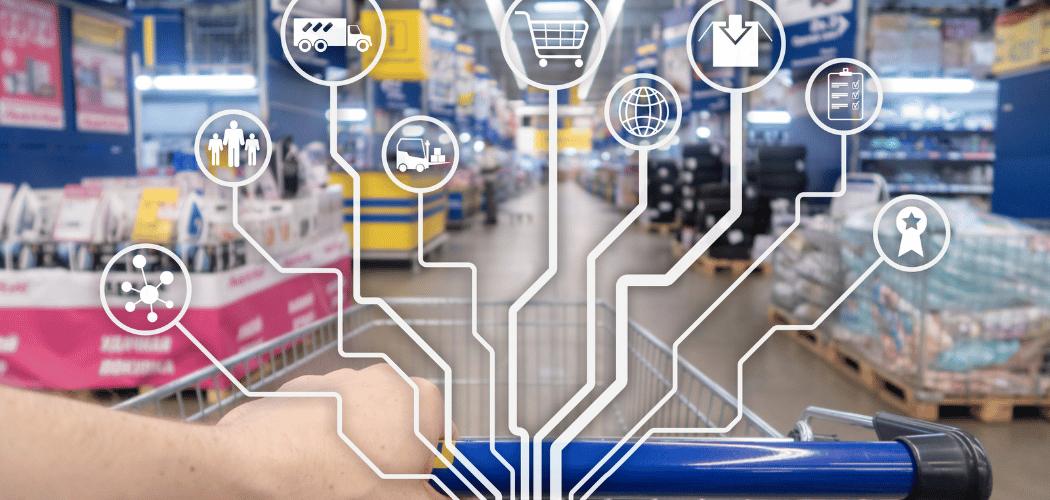The grocery choices we make have always been subject to lifestyle shifts. These six concepts can address emerging needs in innovative ways from which the industry could learn.
By Jenn McMillen
Everyone has to eat. What we choose to eat and where we get it, however, is dictated by a range of other factors, from store locations and transportation to sensory disorders and finances.
So where people buy their groceries keeps changing, and new options emerge seemingly as regularly as the three squares. Who’d have thought 10 years ago that a vegan meal could be bought on the fly from a convenience store? A fresh (and visually appealing) salad in an airport vending machine? Or that you could buy fresh produce at the dollar store or a suburban Walgreens?
Non-traditional food stores now control 63% of the grocery market share, according to Winsight Grocery Business.
Still, there remains millions of square feet of traditional supermarket space that must be maintained. Social and purpose-led thinking could derive one innovative approach to saving that square footage.
Lesson From Aisle One: Supermarkets Are Subject To Change
Remember how robotic delivery vehicles were going to totally revolutionize grocery shopping for everyone? Each year, new supermarket technologies and “stores of the future” are unveiled to better understand consumers.
Not all of these ideas have long shelf lives, in part because not all resolve specific consumer challenges.
- Neighbors-to-the-rescue food. Major grocery mergers, such as that of Kroger and Albertsons, often result in mass store closings. Usually, the targeted locations are in low-income or rural communities, like the village of Emerson, Nebraska. After they lost their local food store several years ago, the 824 residents of Emerson took the matter into their own hands. By 2022, they had raised $160,000 to open Post 60 Market, NPR reports. The co-op offers a full range of groceries and is run by a board of directors that its investors elect annually. Meanwhile, in Cody, Nebraska, population 167, the local school district runs Circle C Market, which opened with the help of a USDA grant and several national organizations. The other nearest grocery store is 40 miles away.
- Democratized nutrition. For 73% of standard food shoppers, price is the leading barrier to buying organic and natural foods, the Food Institute reported in March. Many of these shoppers don’t even bother looking for healthier, natural alternatives. The family-run chain Natural Grocers, of Texas, has been on a mission to change that. Its everyday-low-price strategy has a designation – “Always Affordable Pricing” – which the company has formalized with a service mark (similar to a trademark, but for services). Securing the best possible pricing is in fact one of the supermarket’s five founding principles, along with nutrition education.
- Creating sensory-sensitive environments. An estimated one in 20 people may live with sensory disorders, such as aversions to harsh lights and loud noises, which trigger anxiety and limit activities. Several retailers are responding by designating sensory-friendly times and accommodations. Among them is Walmart, the nation’s largest food seller. Over the summer it introduced sensory-friendly hours on Saturday mornings to accommodate back-to-school customers and their kids. And in the United Kingdom, a range of supermarkets, from Aldi to Tesco, are offering (or testing) quiet hours, with lowered lights, toned-down checkout noises and discontinued overhead music, the UK’s Love Money reported in August.
- Showrooming grocery concepts for the stylish. Although it now has a permanent location in Manhattan’s Greenwich Village, Pop Up Grocer spent years springing up in a range of urban locations, from Washington, D.C. to Denver. But it’s the temporary setting it hosted at eight Nordstrom stores that inspires a potential movement. Pop Up is much like fashion, after all. Founder Emily Schildt follows specific product criteria: All of it independently made goods must be new and interesting, they must be produced responsibly, and they must look good. And, like styles, the brands Pop Up carries come and go. Those that have been featured include One Trick Pony peanut butter and Dam Good English muffins.
- Insisting on checking you out. Self-serve technology continues to erode engagement between shoppers and retail staff, and Trader Joe’s is having none of it. Its CEO Bryan Palbaum has pledged to never incorporate self-checkout aisles in Joe’s nearly 565 stores. “Self-checkout is work. I don’t want that,” he said in an interview with Payments Dive. Trader Joe’s has avoided e-commerce as well. Instead, it is committed to supporting its relaxed, efficient, and fun in-store experience. By being a self-serve technology Luddite, TJ’s might be ahead of the curve: In September 2022, Wegmans discontinued its self-checkout app because of losses, CNN reported. (Wegmans has since begun testing smart-cart tech.)
- Servings for the singles. Nearly 28% of all U.S. households were occupied by one person in 2020, the Census reports. That figure has risen a couple of percentage points since 2000, and is likely climbing further due to the phenomenon of “gray divorce.” From 1990 to 2021, the rate of divorce among people older than 65 has tripled, according to AARP. So why is it so hard to find staple items, such as cheese, meat, and baked goods, in single sizes? At some stores, customers must purchase lemons by the bag. Many supermarkets sell premade meals that can accommodate singles, but these can be costly and they limit choices. If there’s a grocery store out there addressing this expanding market, please raise your hand.
Eating Might Not Be A Choice, But The Supermarket Is
Everyone has to eat. So every retailer has an opportunity.
Those that try to solve the social, physical, and environmental factors that force consumer change will be at an advantage. Most every retailer does this now, to some degree. What most don’t is commit to the lesser-known, less-glamorous factors that interrupt shopping patterns.
Money spends the same from wherever it comes. Where it goes to is a matter of choice.
This article originally appeared in Forbes.
Forbes.com retail contributor Jenn McMillen is nationally renowned as the architect of GameStop’s PowerUp Rewards, and is Founder and Chief Accelerant of Incendio, a firm that builds and fixes marketing, consumer engagement, loyalty and CRM programs. Incendio provides a nimble, flexible and technology-agnostic approach without the big-agency cost structure and is a trusted partner of some of the biggest brands in the U.S.





